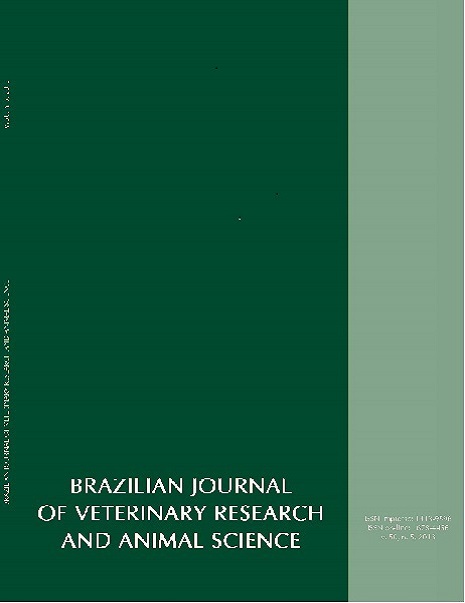Correlations between testicular hemodynamic and sperm characteristics in rams
DOI:
https://doi.org/10.11606/issn.2318-3659.v50i5p384-395Keywords:
Ovine, Spermatozoa, Blood flow, Doppler, TesticleAbstract
The testicular artery is responsible for the blood supply that reaches the testis and has great importance in heat radiation. Vascular changes in the testis may lead to damage in sperm production, reflected in sperm motility and morphology. The aim of the present study was to evaluate correlations between testicular vascularity and sperm characteristic. Eight adult Santa Ines rams showing different reproductive status were used. The testicular vascularity and sperm characteristics were evaluated fortnightly during 90 days. Color Doppler ultrasonography was used to evaluate the testicular hemodynamic. Resistance index (RI) and pulsatility index (PI) of the testicular artery were evaluated by spectral-Doppler mode. The color-Doppler mode was used to evaluate the blood flow of the pampiniform plexus and testicular parenchyma. The semen analyses assessed were volume, concentration, motility, and morphology. The data were submitted to Pearson´s linear correlations test (p < 0.05 was considered significant). No correlations were found between motility and testicular hemodynamic. The percentage of total sperm defects was positively correlated to left and right parenchymal score and to left RI and PI. On the other hand, the pampiniform plexus score was positively correlated to the number of colored pixels and negatively correlated to the RI and PI, for both sides. This study showed that the increase of sperm defect can be related to increase of testicular blood flow; however, more studies are need.Downloads
Download data is not yet available.
Downloads
Published
2013-10-29
Issue
Section
ARTICLES
License
The journal content is authorized under the Creative Commons BY-NC-SA license (summary of the license: https://
How to Cite
1.
Batissaco L, Celeghini ECC, Pinaffi FLV, Oliveira BMM de, Andrade AFC de, Recalde ECS, et al. Correlations between testicular hemodynamic and sperm characteristics in rams. Braz. J. Vet. Res. Anim. Sci. [Internet]. 2013 Oct. 29 [cited 2026 Jan. 17];50(5):384-95. Available from: https://revistas.usp.br/bjvras/article/view/79938





